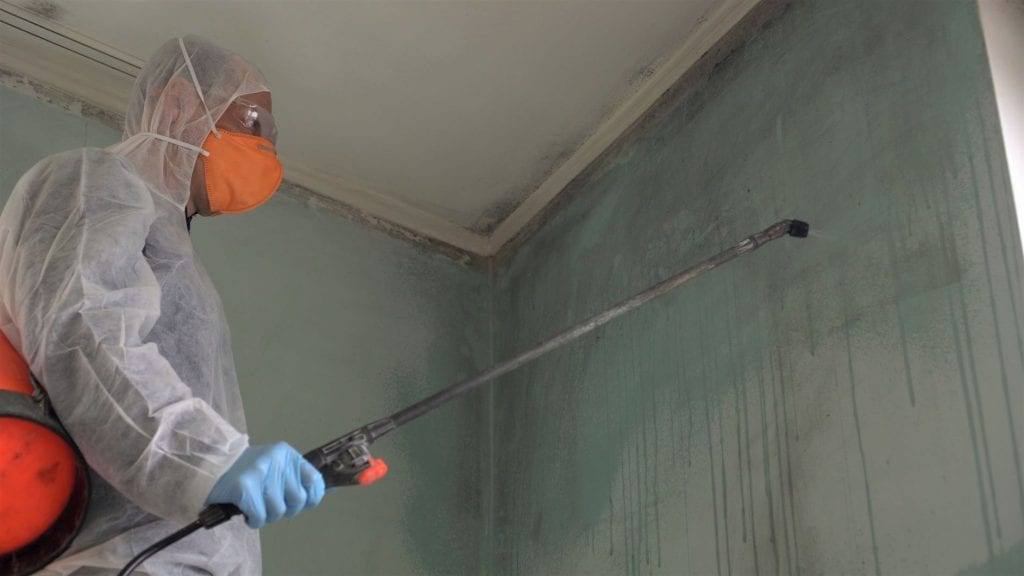The more you know about the type of mold that is present in your home, the more likely a cleanup and remediation effort will prove successful. Incomplete or ineffective mold cleanup may cause spores to spread throughout a structure and require extensive remediation down the road. It can be difficult to determine when an infestation requires the expertise of mold remediation and testing experts.
Here are several scenarios in which it is best to contact United Water Restoration to connect with the most qualified mold cleanup and remediation professionals in your area to solve your mold problem.
You Smell A Mold Problem But Don’t See One
Searching for hidden mold is a common cause of exposure to irritating spores or microbial volatile organic compounds. Even if you find signs of mold, it is impossible to identify the species and subspecies of fungus-based on appearance alone.
Many mold species appear black in color depending on the stage of the growth cycle. Stachybotrys chartarum, or toxic black mold, may be green during early growth stages. Environmental hygienists and other mold testing specialists rely on three sampling methods:
- Air
- Bulk
- Surface
A sample of air can be analyzed in a lab for signs of mold spores as well as telltale microbial volatile organic compounds. Fungus releases off-gases during the growth cycle, and so the presence of mVOCs in an air sample confirms that mold is currently growing. The chemical composition of a sample may be helpful for identifying the species and subspecies of mold and for determining whether the fungus is toxigenic.
Bulk sampling involves removing items that could have mold colonies or spores present on them. A professional mold tester may even take a sample directly from the surface of active growth. These samples are analyzed in a lab and may even be cultivated to obtain information to make remediation more successful.
You See A Mold Problem
Visible mold growth is a clear indication of a mold problem. Even so, the full extent of an infestation may not be obvious. A few small colonies may look like a project that you can undertake, but it is still a good idea to seek professional help.
The conditions that made it possible for spores to multiply are likely to have caused mold to grow in less visible locations, such as behind walls, above ceilings, or in an attic or basement. Mold remediation and testing experts can determine the square footage of the affected area.
After a Major Plumbing Leak
A broken supply line or a sewage backup in which water damage has spread between floors pose the greatest risk of mold growth. Supply lines contain clean, treated water. Leaks from these lines are classified as Category One water damage and only require timely drying. If days pass between the time of the initial damage and cleanup, the condition of the water will degrade. Contaminated Category Two gray water or Category Three black water from a sewer backup contain contaminants that could accelerate mold growth. In general, the longer that organic materials such as drywall or insulation remain damp, the more likely that mold will start to form.
After a Structure Has Flooded
Restoration professionals classify flood water as Category Three water. If water stands in a residence or commercial building, this structure is at very high risk for mold growth. Pumping out water as quickly as possible without causing structural damage, tearing out any ruined building materials such as carpet or drywall, and cleaning, disinfecting, and completely drying the affected are all necessary to prevent mold. Otherwise, post-flood conditions are among the most favorable for mold.
Under any of these circumstances, it may be difficult or impossible for a non-professional to determine the extent of an infestation. Rather than risking an incomplete cleanup or failure to adjust environmental conditions to prevent the problem from continuing or recurring, you should depend on trained and experienced mold remediation and testing experts.
Environmental hygienists or mold testing specialists will perform precise tests and obtain lab results prior to proceeding with cleanup standards set by the Environmental Protection Agency and the restoration industry based on input from health experts and mycologists. High standards for cleanup and mitigation can make a mold problem less likely to recur and discourage new species from starting to grow in the future.
We provide services in Ormond Beach, Florida, Jacksonville, Florida, Daytona Beach, Florida, Orlando, Florida, Tampa, Florida, Melbourne, Florida, and many other locations around Florida!





